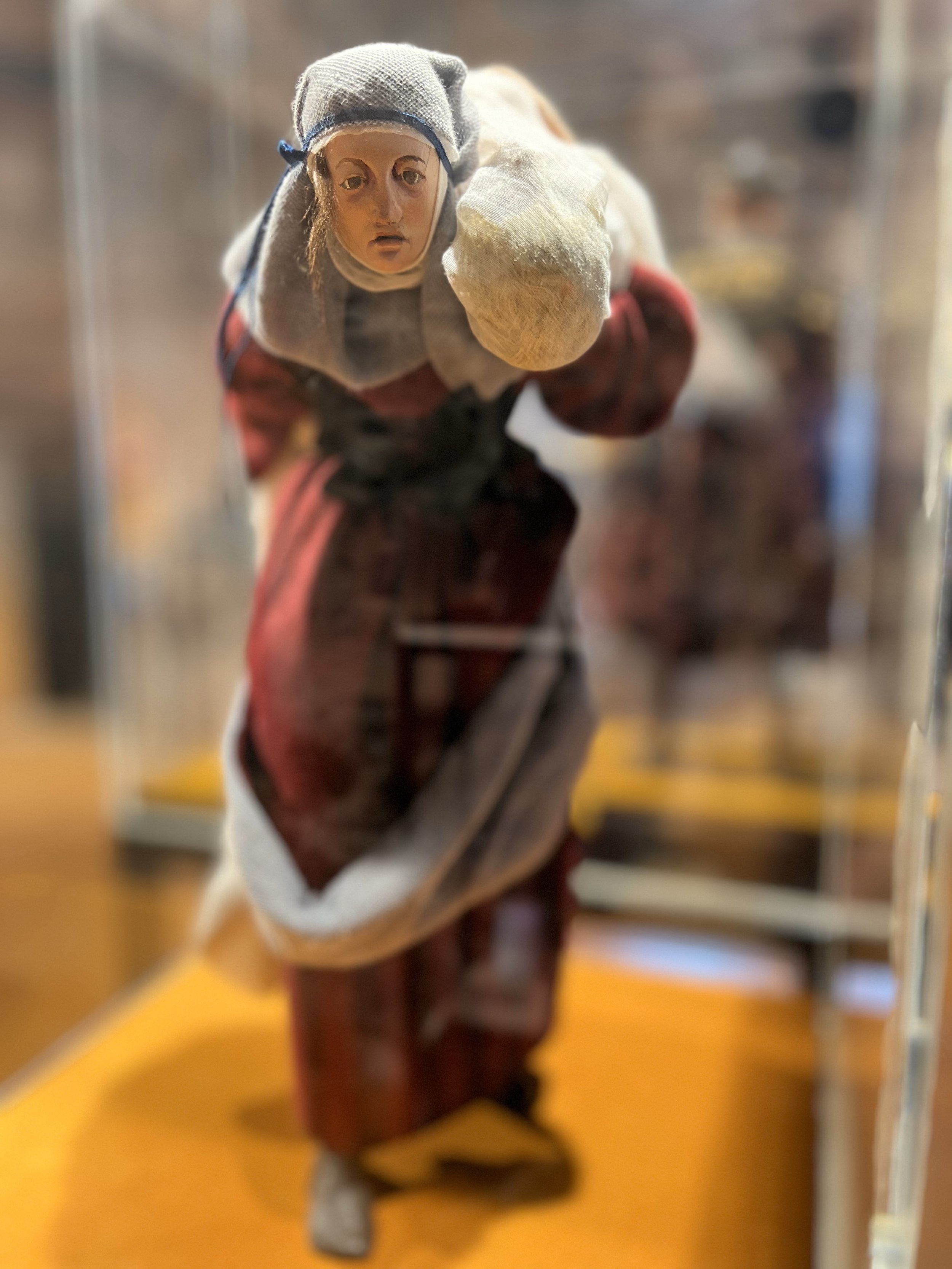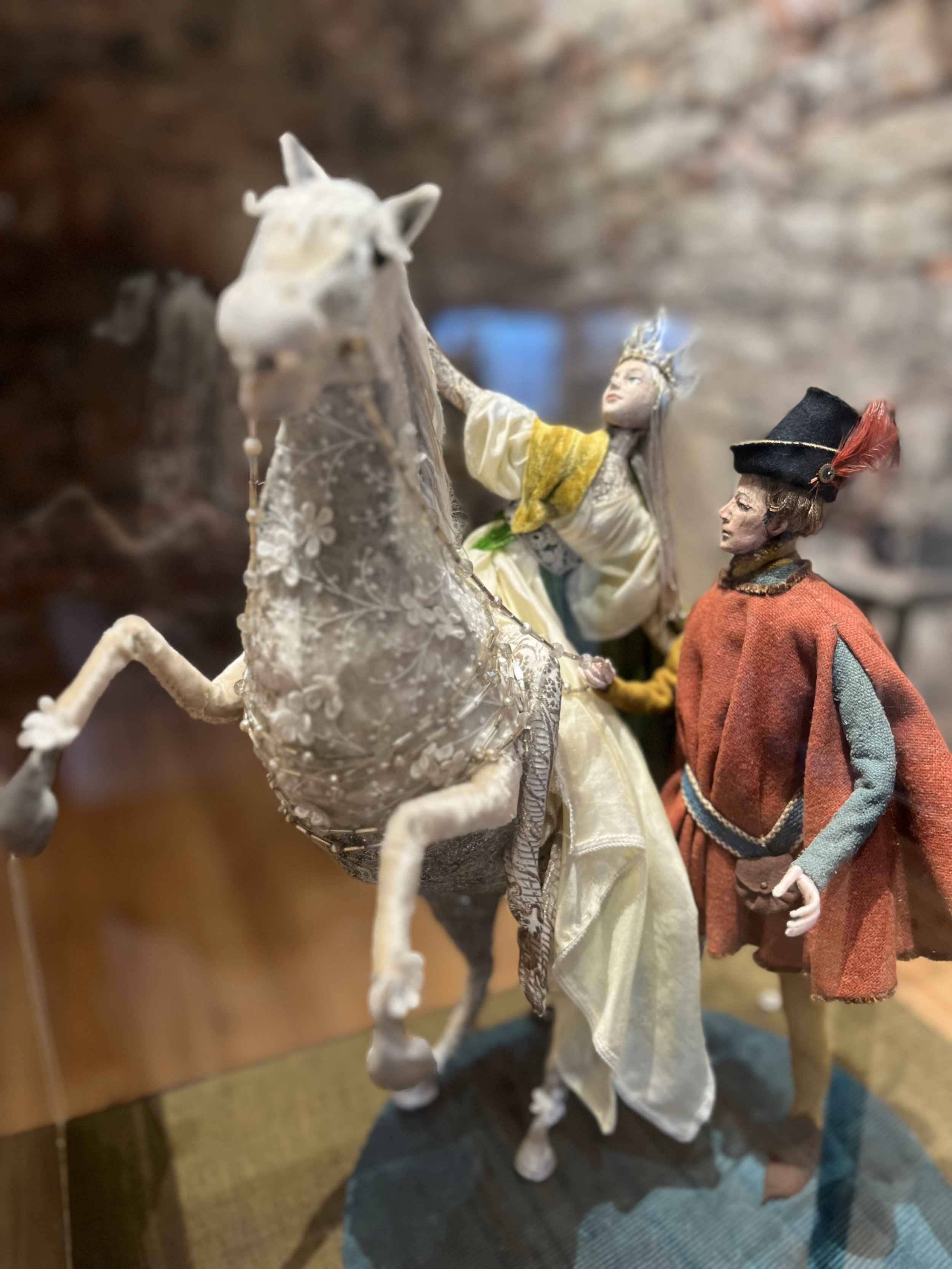The Magical Dolls of Smailholm…
Smailholm Tower is a fairly uncompromising 15th century Towerhouse of the kind common across the Borderlands between Scotland and England at that time. It’s original owners (The Pringles or Hoppringles) were wealthy farmers but such was the brutality of the time that having an enclosed, fortified tower was sensible precaution - even a farmer was a Border Reiver in the 15th and 16th centuries. After a while the family moved to Galashiels and it was sold to another famous Border family, The Scott’s of Harden, around 1635. They made some modernising improvements but it was finally abandoned in 1710 - the dawn of the United Kingdom making such a remote, fortified tower less necessary than in prior centuries. The Scott’s then moved into a neighbouring farm (Sandyknowes, which you will pass through if visiting the tower today), and several generations later it was at Sandyknowes that author and historian Sir Walter Scott came as a boy, his imagination being fired by the abandoned tower, fuelling thoughts not only of his Reiving ancestors, but the shadowy and mysterious ballads that live here in The Borders - Tales of fairies, supernatural visitations, the de’il…
Three key strands of Borders culture combine then at Smailholm:
The Border Reivers - Ballads - Sir Walter Scott
All three were celebrated in a 1983 exhibition called ‘Minstrelsy of the Scottish Border’, featuring work by married artists Anne Carrick (1919 - 2015) and MacDonald Scott (1914 - 1996). The exhibition combined highly detailed, miniature figures created by Anne and tapestries woven by MacDonald. I think calling the figures Anne made dolls sells them short, however that was the term she used so I will as well! They are incredibly detailed, down to the materials used for clothing and are still looking good, more than 40 years after being made. Some people find them a little eerie, the lifelike qualities divide opinion. Indeed, when I last visited the custodian at the Tower made this point very clear but for me they are both perfectly observed as works of art, and perfectly placed at Smailholm where the three themes above come together. They are set out across three floors within the tower, with Scott’s life on 1, The Border Ballads of Reivers, Kings and Queens on 2 and finally the supernatural tales on 3. The tower is open for the summer season (see end of the post for details) and I recommend a visit, either on your own or in the hands of TVB Tours. If you do go, make sure you take up the free audio guide available which has atmospheric singing of the ballads, and adds greatly to your visit. Here are some of my favourites of both Anne Carrick’s dolls, and the stories behind them.
James Hogg, Walter Scott and Willie Laidlaw listening to Hogg’s mother singing ‘Auld Maitland’
The young Scott was introduced to James Hogg by his friend Laidlaw, farmer at Blackhouse in Yarrow, in around the year 1800. Hogg’s mother knew the old Border ballads well, but only to sing - nothing had ever been written down, until Scott collected them. As it happened Mrs Hogg was not impressed with Scott’s writing them down, saying “they war made for singing an’ no fur reading!” I love the detail of Scott with his pen and notebook, and of course Hogg with the shepherds maud so closely associated with him, and The Borders.
‘Kinmont’ Willie Armstrong’s escape from Carlisle Castle
This ballad relates to a very real incident in 1596, where notorious Border Reiver William ‘Kinmont’ Armstrong was captured by an English Warden on a truce day, breaching agreements made between Scottish and English Borderers. Armstrong was most assuredly a bit of a wrong un’, but breaking a truce day by making an arrest was not on. So a group of his followers, led by Walter Scott AKA The Bold Buccleuch, rode to Carlisle Castle, where Kinmont was being held, and broke him out in a fairly daring raid. The tableau Anne Carrick created has Scott of Buccleuch on watching brief, while the shackled Armstrong is carried out down a siege ladder, ready to be taken to a pony and home to safety, across the swollen River Eden and Solway Firth.
The Border Widows Lament
A really dark ballad, it is sung from the point of view of the Marjory Cockburn, the widow of the title. Her husband is said to have been executed by the young James V as part of his campaign to pacify The Borders and wipe out The Reivers. James arrived at the home (Henderland in the Megget Valley of Selkirkshire) and had Cockburn killed. Not wishing to see or here this, his wife is reputed to have sat by the Dow Linn waterfall up a nearby cleuch, so as to have the screams drowned out by the roaring waterfall. The ballad may be bending the reality a little, Cockburn was reputed to have been hanged in Edinburgh. It remains however a dark and stirring tale of devotion and grief in these troubled times. Carrick’s figure takes inspiration from these lines of the ballad:
I took his body on my back,
And whiles I gaed, and whiles I sat;
I digg'd a grave and laid him in,
And happ'd him with the sod sae green.
I visited Cockburn’s grave and the ladies seat at Dow Linn last winter, you can find out more on the Instgram reel below.
Thomas The Rhymer and The Queen of Elfland
Finally, I loved the figures of Thomas The Rhymer and The Queen of Elfland. One of the Borders most enduring and well known tales, it tells of Thomas Learmonth of Ercildoune (Earlston today). A real person who is reputed to have had a fantastical experience when he meets the Queen of Elfland under a tree in the shadow of Eildon Hill. He goes with her to Elfland and returns with the gift of prophesy. I go deeper into the legend surrounding Thomas on my Borders Literary Tour. It bares similarity with another famed Border tale, that of Tam Lin. Both are gathered in the exhibition at Smailholm, along with other supernatural ballads.
I hope you have enjoyed this wee love letter to one of the quirkier displays in The Borders. If you want to visit Smailholm to see the collection up close you can find out how below.
As ever all my blogs are free, however if you’ve enjoyed reading and fancy throwing a couple of pennies into the tip jar you can do so using the Ko-fi link below. Thanks, and happy travels.
Smailholm Tower is open for visitors until 30 September. Sunday to Thursday, 10am - 4.30pm (last entry 4pm).
Accessibility can be challenging, it is via an earth path which can be muddy, steep and slippery. No toilets on site, nearest are in Kelso or at Dryburgh Abbey. Don’t let these challenges put you off, but it’s definitely worth being aware of them!
For further information about Anne Carrick’s figures, check out this blog from Historic Environment Scotland
Border Ballads Brought to Life at Smailholm Tower | Historic Scotland (historicenvironment.scot)







